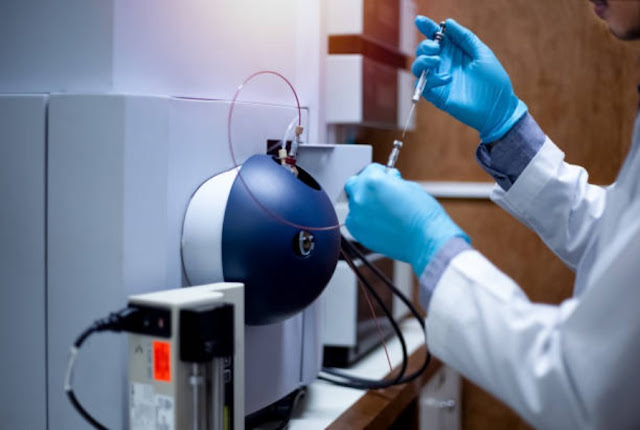Skin Barrier Repair Creams in Dermatitis Health

Skin Barrier Repair Creams and Dermatitis Health
Skin barrier repair creams are specially formulated products
to reestablish and enhance the skin's natural barrier function. They provide a
protective layer on the skin's surface, preventing moisture loss and shielding it
from external irritants. In dermatitis cases, where the skin barrier is
compromised, these creams are particularly beneficial in restoring and
reinforcing the damaged wall.
Key Ingredients in Skin Barrier Repair Creams:
Ceramides: Ceramides are lipids unsurprisingly found in the
skin's remotest layer, known as the stratum corneum. They play a vital role in
maintaining skin hydration and integrity. Skin barrier repair creams containing
ceramides help replenish the depleted ceramide levels, reinforcing the skin
barrier and improving its ability to retain moisture.
Hyaluronic Acid: Hyaluronic acid is a hydrating substance
that attracts and retains moisture in the skin. Its inclusion in skin barrier
repair creams enhances skin hydration and elasticity, reducing dryness and
promoting healing.
Natural Oils: Skin barrier repair creams often contain ordinary
oils such as jojoba, argan, or shea butter. These oils provide emollient
properties, moisturizing the skin and improving its flexibility and suppleness.
Mechanisms of Action:
Skin barrier repair creams work through several mechanisms
to restore and protect the skin barrier:
Hydration: By replenishing moisture levels, these creams
help combat dryness and improve skin hydration, promoting healing and reducing
itching and irritation.
Strengthening the Barrier: Including ceramides and other
lipid-rich ingredients in these creams helps reinforce the skin barrier,
restoring its natural protective function.
Anti-Inflammatory Effects: Many skin barrier repair creams
contain ingredients with anti-inflammatory properties, such as niacinamide or
oat extracts. These substances help calm the skin, reducing redness, swelling,
and discomfort associated with dermatitis.
Repairing the Skin Matrix: Some skin barrier repair creams
stimulate collagen synthesis and promote the production of proteins that
support the skin's structure, aiding in the repair process.
Advancements in Wireless Connectivity Technology
Wireless connectivity technology has witnessed remarkable
advancements in recent years, transforming how we communicate, access
information, and interact with the world around us. From improved wireless
networks to the Internet of Things (IoT) and 5G technology, these developments profoundly
impact various industries.
Healthcare:
Wireless connectivity technology has revolutionized
healthcare by enabling real-time patient monitoring, remote consultations, and
telemedicine. With wearable devices and connected sensors, healthcare providers
can monitor patients' vital signs, collect data, and deliver personalized care
remotely. This technology enhances access to healthcare services, particularly
in rural or underserved areas, and improves patient outcomes through early
detection and intervention.
Communication:
The proliferation of wireless connectivity technology has
led to seamless communication across different platforms. We can stay connected
anytime, anywhere, From smartphones to tablets to laptops and smart devices.
High-speed wireless networks, such as 5G, offer faster data transfer rates,
reduced latency, and increased network capacity, enhancing communication
efficiency and enabling new applications like video conferencing, virtual
reality, and augmented reality.
Transportation:
Wireless connectivity technology has revolutionized
transportation systems, making them safer, more efficient, and environmentally
friendly. Connected vehicles and infrastructure elements can interconnect with
each other, enabling real-time traffic management, collision avoidance systems,
and efficient routing. This technology also facilitates autonomous driving,
paving the way for self-driving cars and enhanced road safety.
Smart Homes:
The integration of wireless connectivity technology in homes
has given rise to the concept of smart homes. Connected devices, such as
thermostats, lighting systems, security cameras, and appliances, can be
controlled remotely through smartphone applications or voice commands. This
technology offers convenience, energy efficiency, and enhanced security.
Industrial Applications:
Wireless connectivity technology has transformed industrial
processes, enabling efficient monitoring, automation, and predictive
maintenance. Manufacturers can monitor equipment performance, detect faults,
and optimize production processes through wireless sensors and data
connectivity. This technology improves operational efficiency, reduces
downtime, and enhances overall productivity.
Conclusion
Skin barrier repair creams are vital to maintaining skin
health, particularly in dermatitis cases. These creams alleviate symptoms and
promote healing by restoring and reinforcing the skin's natural barrier
function. Moreover, the advancements in wireless connectivity technology have
revolutionized various industries, including healthcare, communication,
transportation, and home automation. These advancements have enhanced
connectivity, improved efficiency, and opened up new possibilities for
innovation and development. As wireless connectivity technology evolves, we can
anticipate further transformative effects on our daily lives and industries
worldwide.


